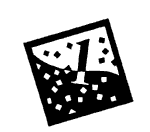|
Books that involve computation and several storybooks in which
numbers play an important role are cited. In addition, there is
a book about a game in which the roll of two dice determines the
outcome. Because dice are used to play QUADICE and the game involves
probability, be sure to check the books listed under the GEMS
guide In All Probability.
Anno’s Math Games
Anno’s Math Games II
Anno’s Mysterious Multiplying Jar
Erin McEwan, Your Days Are Numbered
Jumanji
The King’s Chessboard
The Phantom Tollbooth
The Toothpaste Millionaire
Anno’s Math Games
by Mitsumasa Anno
Philomel Books/Putnam & Grosset, New York. 1982
Grades: 2–5
Picture puzzles, games, and simple activities introduce the
mathematical concepts of multiplication, sequence, ordinal numbering,
measurement, and direction.
Return to title list.
Anno’s Math Games II
by Mitsumasa Anno
Philomel/Putnam & Grosset, New York. 1987
Grades: 2–4
Here are more picture puzzles, games, and simple activities
that introduce the mathematical concepts of multiplication, sequence,
ordinal numbering, measurement, and direction.
Return to title list.
Anno’s Mysterious Multiplying Jar
by Masaichiro and Mitsumasa Anno
Philomel/Putnam & Grosset, New York. 1983
Grades: 3–8
The simple text and illustrations introduce the mathematical
concept of factorials. Through an understanding of multiplication,
you can learn about factorials and the way that numbers can expand.
On a second reading of the book, students can follow along using
calculators to verify the large number of jars at the end of the
story.
Return to title list.
Erin McEwan, Your Days Are Numbered
by Alan Ritchie
Alfred A. Knopf, New York. 1990
Grades: 4–8
Erin, a sixth grader with an intense fear of numbers, takes
a job at the delicatessen and needs to learn bookkeeping to stay
employed. With the encouragement of the owner, Erin surprises
herself by not only improving her math skills, but she catches
a bookkeeping error that saves thousands of dollars! Though stereotypical
in its portrayal of women as being unskilled in math, the book
is an opportunity to discuss and dispel that belief.
Return to title list.
Jumanji
by Chris Van Allsburg
Houghton Mifflin, Boston. 1981
Grades: K–5
A bored brother and sister left on their own find a discarded
board game (called Jumanji) which turns their home into an exotic
jungle. A final roll of the dice for two sixes helps them escape
from an erupting volcano. After reading the book, and based on
their experiences with the GEMS QUADICE activities, students could
investigate dice and discover more about the probability of rolling
two sixes in a row.
Return to title list.
The King’s Chessboard
by David Birch; illustrated by Devis Grebu
Dial Books, New York. 1988
Grades: K–6
A proud king, too vain to admit what he does not know, learns
a valuable lesson when he readily grants his wise man a special
request. One grain of rice on the first square of a chessboard
on the first day, two grains on the second square on the second
day, four grains on the third square on the third day and so on.
After several days the counting of rice grains gives way to weighing,
then the weighing gives way to counting sackfuls, then to wagonfuls.
The king soon realizes that there is not enough rice in the entire
world to fulfill the wise man’s request.
Return to title list.
The Phantom Tollbooth
by Norton Juster; illustrated by Jules Feiffer
Random House, New York. 1989
Grades: 2–8
Milo has mysterious and magical adventures when he drives
his car past the Phantom Tollbooth and discovers The Lands Beyond.
On his journey, Milo encounters numbers, geometry, measurement
and problem solving in amusing situations. The play on words in
the text is delightful.
Return to title list.
The Toothpaste Millionaire
by Jean Merrill; illustrated by Jan Palmer
Houghton Mifflin, Boston. 1972
Grades: 5–8
Twelve-year-old Rufus Mayflower doesn’t start out to
become a millionaire—just to make toothpaste. Assisted by
his friend Kate and his math class (which becomes known as Toothpaste
1), his company grows from a laundry room operation to a corporation
with stocks and bank loans. Many opportunities for estimations
and calculations are presented including cubic inches, a gross
of toothpaste tubes bought at auction, manufacturing expenses,
and profits. An ideal book to illustrate the need for, and use
of, mathematics in real-world problem solving.
Return to title list.
|
|


